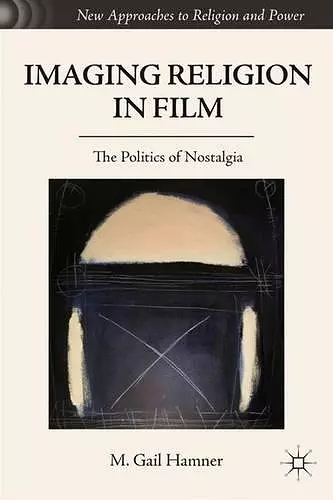Imaging Religion in Film
The Politics of Nostalgia
Format:Hardback
Publisher:Palgrave Macmillan
Published:8th Dec '11
Currently unavailable, and unfortunately no date known when it will be back
This hardback is available in another edition too:
- Paperback£44.99(9781349342402)

This book offers a new methodology for examining the ethico-political dimensions of religion and film which foregrounds film's social power both to shape subjectivity and to image contemporary social contradictions and analyses three specific films: Kurosawa's Dersu Uzala ; Kiarostami's Taste of Cherry ; and the Coens' The Man Who Wasn't There .
'Hamner offers religious studies, cultural studies, and philosophical studies something new and important: a theory of cinema, politics and religion as they coalesce in the production and reception of film. The book is more than the sum of its parts. Hamner crafts her argument wisely and well to argue for film viewing as a pedagogy of the self with profound implications for ethics and politics. Intelligent, thoughtful, and beautifully written.' - Ellen T. Armour, Vanderbilt Divinity School
'This is a profoundly beautiful, original book. By taking seriously the sensual the visual, auditory, and tactile dimensions of film, Hamner ushers us into new ways of experiencing the religious in film. This is not a book about religious stories. Nor is it another book about religious imagery in film. Instead, by attending to what she calls 'ordinary transcendence,' Hamner makes religious feeling compelling. And she shows us how to see it in all kinds of films from Hollywood blockbusters to small critically acclaimed works of international cinema. This critically informed and astonishingly lyrical book promises to change the ways we think, teach, and write about religion and film in the 21st century.' - Laura S. Levitt, Professor of Religion, Jewish Studies, and Gender, Temple University
'Hamner's book blazes an entirely new trail that finally succeeds in linking up a post-secular religious discourse with core and uncompromising materialist politics inspired by Foucault, Deleuze, and Peirce. But what you get here is not your standard boring versions of these thinkers warmed up like last-nights leftovers, but an original, refreshing, and satisfying thesis about the materialist power of film as such! Hamner's book is precisely what Walter Benjamin was gesturing toward in his insights about film and subjectivity. Hamner has invented an entirely new take on film.' - Creston Davis, Assistant Professor of Philosophy and Religion, Rollins College
'Read Imaging Religion in Film to see why viewing a film becomes an occasion through which our deepest yearning to experience transcendence in all our ordinary relations becomes a promise. With theoretical rigor, poetic lucidity, and visions of transcendence in the ordinary, Hamner has effectively transformed the way I now view film. This is a must-read for anyone interested in film, art, and religion!' - Anne Joh, Associate Professor of Systematic Theology, Garrett-Evangelical Theological Seminary
'In this deeply engaged and strikingly original meditation on the image of religion in film, M. Gail Hamner argues that, in a postmodern context, religion registers as a form of nostalgia-tinged transcendence as evocations of, and invitations to think about, the gap between human desire and the limited possibilities of fulfillment in the thoroughly commodified context of late capitalism. Such prompts to thought, providing opportunities for what Hamner terms a 'pedagogy of the self,' provide the basis for pointed political critique. In the course of making this larger case for the political value of attending to religion in film, Hamner offers novel and compelling reflections on a number of under-examined movies that may now begin to draw the critical consideration they clearly warrant.' - Phillip Novak, Associate Professor of English and of Communication and Film Studies, Le Moyne College
ISBN: 9780230339866
Dimensions: unknown
Weight: 395g
193 pages